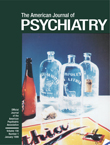To the Editor: We appreciate the thoughtful comments of Drs. Armstrong, Koek, and Mervis. The Minnesota law that allows direct petitioning of the court for permission to give ECT may well have considerable merit, both as an avenue for expeditious relief of patient suffering and as a check on unacceptable demands being placed on the family.
As it turns out, we have an update to offer the readers on this interesting case. The patient was in fact rehospitalized at our hospital after this article was sent out, and this time a different psychiatrist was able to persuade the guardian, the patient’s brother, to go forward with ECT. The patient presented this time with frank catatonic stupor. He received a total of 24 bilateral ECT treatments at the rate of three per week. His response was dramatic, with marked resolution of stupor. Nonetheless, there remained significant residual symptoms (psychomotor slowing, poverty of speech and content, passive oppositionalism). We believe that he received sufficient ECT because he actually became mildly delirious toward the end of the series, suggesting the maximum tolerable amount of ECT had been delivered. The delirium passed in a matter of days, and the patient went back to the residual state described above. At no time did he ever show a glimpse of mania or catatonic excitement. As to the issue of guardianship, it was our experience that the guardian’s consenting was due to the unique interaction of the psychiatrist’s and guardian’s personalities, which were both very strong and shared several important cultural beliefs. It was fortunate that the brother encountered this particular psychiatrist, and it is unlikely that a different psychiatrist would have had the same success in persuading him—another reason for a more predictable judicial process.
As to Drs. Koek and Mervis’s suggestion about intramuscular lorazepam, intramuscular diazepam, 10 mg, was given daily for the first 10 days of the second admission. There was no appreciable difference between response to the intramuscular and oral manner of administration in this patient.
Intramuscular diazepam was chosen because we wanted to minimize the number of injections the patient would receive and because we were concerned that intramuscular lorazepam would necessitate multiple daily injections due to its shorter half-life. Unlike chlordiazepoxide, there is good evidence that intramuscular diazepam is adequately absorbed in young men when given in a highly vascular muscle, which it was (
1). The possible delay in peak effect was of no consequence because we were not looking for acute sedation but, rather, for consistent delivery over a period of days.
We know of no pharmacokinetic reason that would lead us to conceptualize the intramuscular versus the oral manner of administration as being in any way fundamentally different in terms of mode of action or efficacy, and we have seen several other patients with catatonic schizophrenia show disappointing responses to both manners of administration of either diazepam or lorazepam. Nevertheless, we concur that, acutely, parenteral routes may lead to a more rapid and pronounced peak absorption spike with resulting initial disinhibition, which can then be mobilized in the service of recovery, particularly if there is an “expectation set” for improvement from the staff and milieu, much as what happens in an Amytal interview. We certainly support its use in all such patients.

